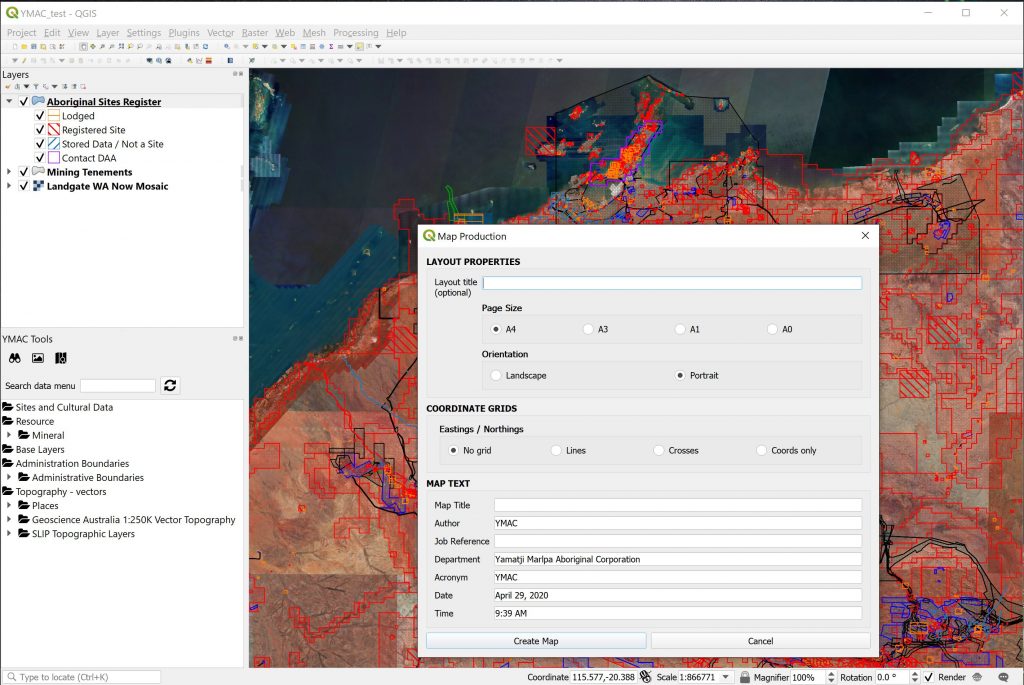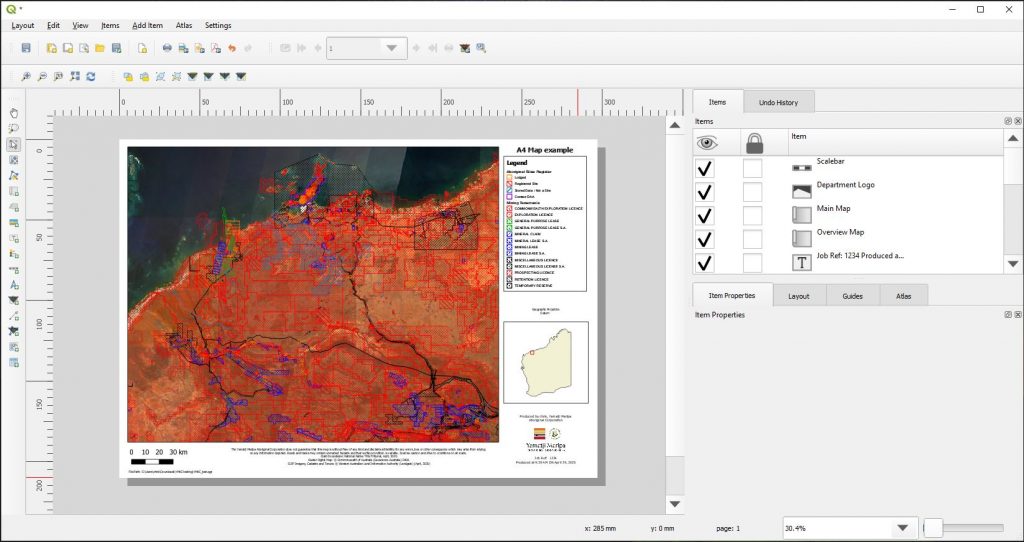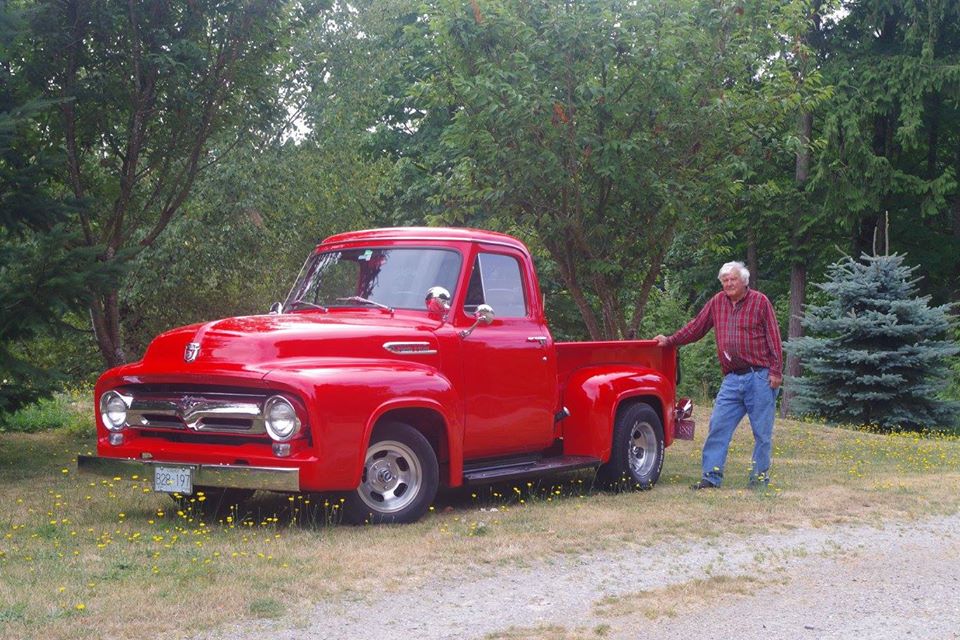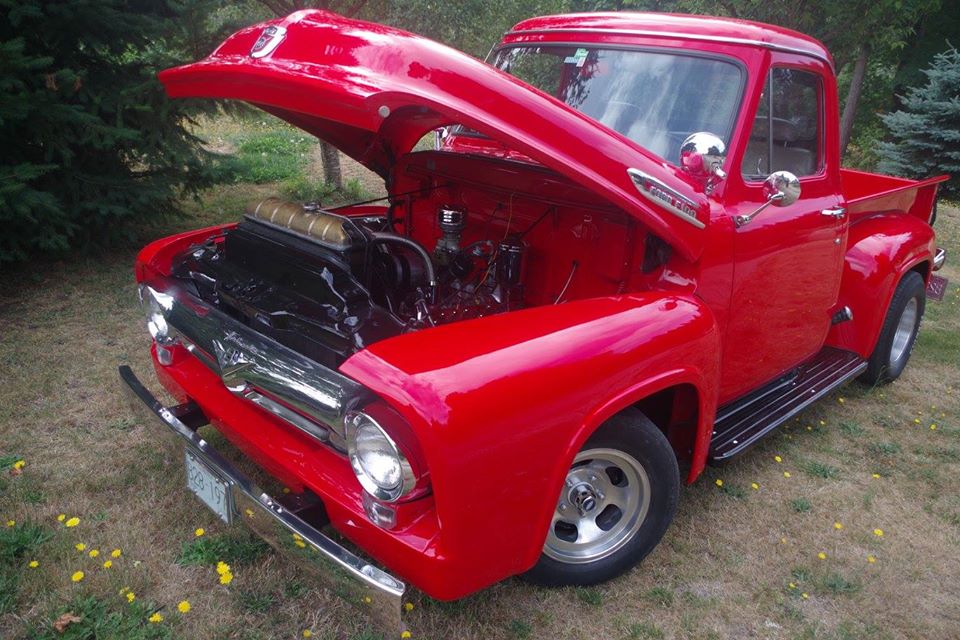The staff at Yamatji Marlpa Aboriginal Corporation (YMAC) have been using QGIS as an operational tool for mapping and analysis for several years now, and like many of us they saw some big improvements in functionality and user experience with the arrival of Version 3. The new version had the potential to increase uptake right across their organisation and standardise a number of processes; however, one thing was holding them back.
Much earlier on, YMAC had taken up a ‘data discovery and map production plug-in’ and customised it for their own environment. The tool provided an easy-to-use and time-saving interface for staff to find the mapping layers they wanted such as Statewide imagery, aboriginal sites and internal layers. It also had an excellent map production tool that automated the creation of standard YMAC-branded map outputs at various page sizes and orientations. The change in the back-end development framework to Python 3, QT 5 and other software library upgrades meant that all those handy plug-ins we use no longer worked in QGIS 3.x versions (further info for the techies can be found on the QGIS API Documentation).

|

|
|
The YMAC QGIS tool (left menu bar and pop-up interface) provides a range of data loading and map configuration options. Automated map layouts (right) reflect company branding and auto map elements. |
|
So YMAC engaged us to upgrade their tool – and my colleague Tom Lynch and I were keen to get started.
Looking back on the project, it reminds me a bit of my father’s obsession with restoring classic cars. He has a great mind for solving mechanical challenges – while playing classic blues-rock in the garage late into the night – and could see the inherent value of transforming broken-down vehicles like a ’53 Ford Truck he dubbed ‘Snoopy’ to its former glory.

|

|
|
My father’s prized possession – his restored 1953 Ford Truck. |
|
For him it was as much about getting the thing running again as it was about the visual restoration, and that required a fair amount of tinkering and elbow grease. I could never get into that hands-on mechanical work (my father found that immensely frustrating) but hey, I could still admire the perseverance and the outcomes he achieved in making these things roadworthy some 50 years after they were made.
Even though the YMAC tool upgrade was a relatively small project by comparison (and to do with software rather than gears and fan belts!), Tom and I discovered the changes ‘under the hood’ were significant. After gaining an understanding of the workflows and components to retain, it was a lot of work and testing to update the code references and verify everything worked as expected. In some cases, entire QGIS component libraries had been overhauled with new ways of creating map elements like legends and layout elements. Development took longer than expected and testing was an interesting process. With all of the work happening remotely and involving iterative test versions, the team at YMAC were very obliging in providing test data and remote connections so we could spot and iron out unexpected behaviour and glitches along the way.
In the end, we are really proud of the result and happy to see that the YMAC team have rolled out the new tool along with QGIS 3 across their business. It is a piece in the puzzle for us as consultants to help organisations like YMAC to achieve greater operational efficiencies and pursue their objective to “continue to walk together with Aboriginal and Torres Strait Islander peoples in a movement of the Australian people for a better future.”
“Well done to you both for getting YMAC tools 3 over the line! It’s been a long journey however both Marty and myself are really appreciative of your efforts and professionalism. We’re really excited that we can roll out the new version to all our staff!”
– Will Davis, YMAC GIS Coordinator.
If you’d want to know more about QGIS, our work in this space, have a look at our QGIS training pages, or please leave a comment below, connect with us on Twitter, LinkedIn or Facebook, or email me directly via chris.roach@gaiaresources.com.au.
Chris

Comments are closed.